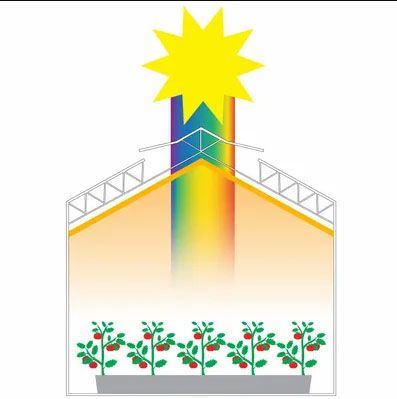
🍅 Technology from TV sets gives greater harvests in greenhouses
Quantum dots can concentrate the parts of the spectrum in light that plants use for their photosynthesis.
Share this story!
QLED is a well-known concept for those who bought a new TV in recent years. Now, the same technology can help farmers get higher yields in a greenhouse.
The idea is that many plants only benefit from a certain part of the spectrum in the light. By using the same kind of quantum dots found in QLED, the company Ubiqd has created a thin film that transfers the "useless" parts of light into light that the plant can use in its photosynthesis.

In tests, the technology yielded 20% larger crops of tomatoes.
Ubiqd has been working with the technology since 2014 and has now just started mass-producing and selling films commercially.
In addition to giving larger harvests here on earth, Ubiqd's technology can help us colonize space in the future.
"Plants in space, have to be protected from harmful UV rays; QDs could both protect the plants and repurpose that incoming UV light into wavelengths that plants could use for photosynthesis," says Hunter McDaniel CEO of Ubiqd.